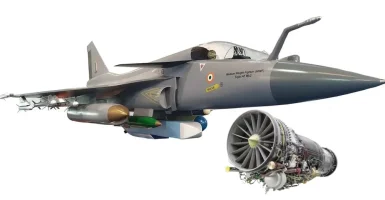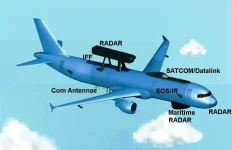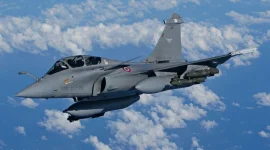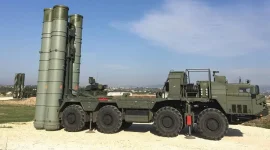- Views: 829
- Replies: 4
In a significant development for India's indigenous defence capabilities, U.S. aerospace leader General Atomics Aeronautical Systems, Inc. (GA-ASI) will provide expert consultation to India's Aeronautical Development Establishment (ADE) for its advanced drone program.
The collaboration will focus on the design and development of a new Indian High Altitude Long Endurance (HALE) Unmanned Aerial Vehicle (UAV).
The Aeronautical Development Establishment, a key laboratory under the Defence Research and Development Organisation (DRDO), is tasked with creating a sovereign HALE UAV capability for India.
Such aircraft are designed to fly at very high altitudes for extended periods, making them ideal for strategic surveillance and long-range missions.
This partnership with General Atomics, the manufacturer of the globally recognized MQ-9 Reaper and Predator drones, is expected to provide a major boost to the project and align it with international standards.
According to the ADE, the program is currently exploring two distinct design concepts for the UAV. One version features a Y-shaped tail, while the other is based on a Single Engine Twin Boom (SETB) airframe.
Both designs are being developed to fulfill the Indian armed forces' requirements for persistent intelligence gathering over vast areas and the ability to conduct precise strikes from a safe distance. This initiative represents the next step in India's UAV development, building on experience from earlier projects like the TAPAS-BH MALE drone.
The consultancy from General Atomics will concentrate on five critical technology domains to ensure the success of the indigenous HALE UAV. These areas are fundamental to the performance and reliability of any modern unmanned system.
First, GA-ASI will assist in aerodynamic optimization to refine the drone's shape, ensuring maximum efficiency, better fuel consumption for longer flight times, and stability at high altitudes.
This will be paired with expertise in flight control systems and autonomy, where GA-ASI will leverage its extensive operational experience to help develop sophisticated autonomous navigation and mission execution software.
Furthermore, the collaboration will cover payload and communications integration. GA-ASI will provide guidance on creating a flexible architecture for integrating various payloads, allowing the drone to be equipped for intelligence, surveillance, and reconnaissance (ISR), electronic warfare, or strike missions.
A crucial part of this is the integration of secure satellite communication (SATCOM) and data links, which are essential for operating the UAV beyond the visual line of sight and transmitting real-time data to command centres.
Finally, the American firm will help improve the Ground Control Station (GCS) interface. The GCS acts as the remote cockpit for the UAV operator, and an intuitive, responsive interface is vital for seamless mission control, flight planning, and effective analysis of the information gathered by the drone.
This strategic partnership is a key part of India's 'Aatmanirbhar Bharat' (Self-Reliant India) initiative in the critical defence sector.
By leveraging GA-ASI’s world-class expertise, India aims to accelerate its development timeline, lower technical risks, and produce a state-of-the-art HALE UAV fully capable of meeting the operational needs of its army, navy, and air force.




